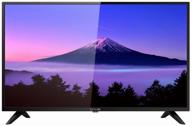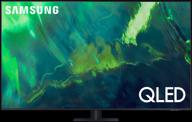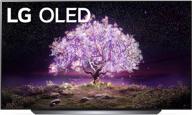
Review on Sony X85J Inch Compatibility KD65X85J by Michael Jennings

Outstanding image quality and built-in functionality. Be sure to adjust these settings!
This TV is a great upgrade if you're looking for UHD, DolbyVision/HDR and the new 120Hz eARC and HDMI 2.1 connections. The picture quality is very good in typical Sony style. The X1 processor and the Triluminous Pro display deliver brilliant colors. The direct light backlight gives you a good range for HDR and DolbyVision content. Before I continue, I want to make sure you are aware of two setting changes that I think are important: 1. Before doing anything else on this TV, I strongly recommend that you go into the picture settings menu for each input or application and disable Motion Flow. MotionFlow is an artificial motion enhancement that makes an image look unnatural and too smooth (almost every brand has this, but it has different names). Essentially, the TV creates extra frames that aren't in the original content. Disabling this setting will ensure you see exactly what is being sent to the TV. Some people like this look, but I suspect most don't like it... and I also suspect that since this setting is on by default, many people don't even know why things look weird. 2. Second, go to the input settings in the HDMI signal format setting and set the HDMI 3 and HDMI 4 ports to "Extended Format (Dolby Vision)". By default, all HDMI ports are set to "Standard Format," which means they do not support the features that high-speed HDMI ports are capable of. If you don't set this up, you'll be wondering why your fancy PS5, Apple TV or whatever can't use Dolby Vision or 120Hz modes, even when plugged into the right port on the TV. If you're still having trouble after changing this setting, you need to make sure you're using high-speed HDMI cables that can handle HDMI 2.1 bandwidth. Don't assume that all HDMI cables are the same. You often need to replace HDMI cables when using old cables from a previous TV. The TV is very easy to set up. It has two legs that snap into place if you want to use it that way, and it also includes some spacers that position the mounting bracket's screw holes at the right depth for wall mounting. A wall mount isn't included, but if you're planning to mount it on a wall, note that all connections are on the side of the TV, not the back. Depending on your setup, this can be good (you can easily access it) or bad (visible cables as opposed to behind and straight into the wall). Once you have it everywhere, just plug it in and you're good to go. When you set up your TV for the first time, you will be asked to sign in with your Google account. If you want to use all the features of the TV, you need to connect the TV to your home network, sign in with your Google account, and allow Google to collect information about what you watch and how you use the TV. Actually, you have to agree to Google's terms of service in order to be able to use the TV at all, but if you don't log in with a Google account, you can at least remain somewhat anonymous. This is where these new TVs get a little annoying. Essentially, you have 3 options for using the TV: 1. Do not connect the TV to the network at all. You can still use the TV as a display for other devices like the Apple TV, Roku, Fire TV, etc., but you won't be able to use any of the built-in streaming apps. 2. Connect the TV to your network but do not sign in to Google. This allows you to use the TV's built-in streaming apps (YouTube, Netflix, Disney+, Prime Video), but you can't add other apps as you have to download them from the Google Play Store and requires a Google account. 3. Connect the TV to your network and sign in to Google. This gives you access to all of the TV's features, including adding additional apps and streaming services, as well as the ability to use the included voice remote to ask the Google Assistant. for stuff. The option you choose depends only on how comfortable you are with Google getting more information from you than you need. If you're already planning on using an external device to stream, you don't even have to turn on your TV. your network. Below are the main features that I think set this TV apart from cheaper models. If these things aren't important to you, you can probably get by with a "smaller" TV, but if you can learn from them, a prefer, then they're definitely worth g: - Direct backlit display. This means that the light source for the TV is behind the screen and shines on you. Low-end TVs typically use edge-lit displays, where the light source is on the edges of the screen. Direct-lit displays like this give you better dynamic range when using HDR modes as the screen can get brighter. Please note that direct lighting is not really the best light source for an LED display. Taking it a step further, you can get Full Array Local Dimming displays, which are similar to direct-lit displays, but allow the TV to brighten and darken specific areas of the picture individually, rather than dim the entire display. If you can afford to upgrade to full-size models with local dimming, I strongly encourage you to do so. - HDMI 2.1 / 120Hz - Until recently TVs could not accept an external 120Hz signal. Also, until recently, there weren't any devices that could output a 120Hz signal, so it didn't matter if your TV could accept it. However, with the advent of the latest gaming systems like Playstation 5 and Xbox Series X, as well as the latest Apple TV and some other devices, there is a demand for televisions that can display 120 frames per second. If you own one of these newer gaming systems, or just want to make sure you're somewhat future-proof, it's imperative that you make sure your next TV supports HDMI 2.1 and 120Hz display modes. This can be a little confusing as many TVs claim 120Hz, but that just means the display panel itself can handle 120Hz images. This doesn't mean you can actually feed your TV an external signal at 120Hz. To do this, you need to make sure your TV supports HDMI 2.1 and 120Hz input. - eARC - eARC is a newer version of the ARC standard that allows the TV to return sound to one of the inputs (ARC stands for Audio Return Channel, with the suffix e for "enhanced"). If you're unfamiliar with this, it simply means that any sound played by the TV can be redirected through one of the HDMI ports, allowing a connected device, such as a TV, to play. a home theater receiver or soundbar, which can then play sounds through a separate port. Speakers instead of the ones built into the TV. The big advantage of eARC is that audio signals that require higher bandwidth can pass through the TV. This allows things like Dolby Atmos surround sound to be streamed back to your audio hardware. Without eARC, some devices cannot receive the full signal. For example, I have an Apple TV and a Sonos Arc Soundbar. Both devices support Dolby Atmos audio, but I was only able to get regular Dolby Digital 5.1 audio on my old TV because the TV itself couldn't pass the Apple TV's Dolby Atmos signal to my soundbar. With eARC this is possible. I tested this setup and my Sonos app immediately showed that the soundbar was receiving a full Dolby Atmos signal from the TV. - Dolby Vision - Dolby Vision is an advanced form of high dynamic range coding that offers even better colors and dynamic range. Many movies and shows are now encoded with Dolby Vision, so you can take full advantage of it with this TV. Built-in apps and the ability to add almost any streaming service Built-in apps, along with any other apps you want to add, means you can plug this TV in anywhere, and as long as it has power and network connectivity, you don't have to have to add something else. As previously mentioned, if you can sign in with your Google account, you can sign out of any external streaming device. The TV is very responsive and all apps work great with a slight delay in loading. - Apple TV app available. For one reason or another, many older Smart TVs don't have the option to download the Apple TV app. If you're not part of the Apple ecosystem, it probably doesn't matter much, but if you are, it means you can access and stream any Apple content you've bought, like TV shows and movies, on the Apple TV+ service . - Built-in Apple AirPlay. If you have an iPhone, iPad or a Mac computer, you can connect directly to this TV via AirPlay. This means you can mirror your computer screen and easily share photos from your phone right on the screen without installing anything extra on your TV, phone or computer. I found this feature great for photo sharing, but unfortunately there was constant stuttering when playing 4K videos from my iPhone 12, which doesn't happen when I use AirPlay through a dedicated Apple TV. Another important note about AirPlay. When you set up your TV for the first time, you will be asked if you agree to Sony's various privacy policies. You can opt out of everyone and continue using the TV, but the AirPlay feature will not work properly unless you at least accept the Sony Smart TV Services privacy policy. The bad news is that the TV doesn't actually tell you this and AirPlay seems to work (it will display a 4 digit code that you need to enter into your device, but this code is never accepted by your device and you can't send things to the TV). They just think there's some mysterious problem. If you accidentally opted out of this particular policy while setting up your TV, you will need to press the Help button on your remote, then go to Status & Diagnostics, Privacy Settings and scroll all the text down until the checkboxes appear on the right become the screen. Make sure you agree to at least the Sony Smart TV Services Policy. Once you do this, AirPlay will work properly. General plus points: - Very good picture with direct backlit display - DolbyVision, HDMI 2.1 120Hz and eARC (transmits Dolby Atmos audio correctly) - Smart TV functions load quickly - Has the ability to download basically any streaming app you need - Google voice remote with additional functionality (e.g. play buttons like pause and fast forward control my Apple TV box) - built-in AirPlay General cons: - you may have privacy issues when connected to Google TV and you have to accept Google's terms to unlock all features TELEVISION. By default, the TV uses MotionFlow for each input and application. If you do not want to use this setting, you must manually change this setting several times. - Even advanced HDMI ports are set to the standard interface by default. - You have to manually switch it to advanced mode or your connected devices won't take advantage of all the advanced features you pay for with this high-end TV. HDMI functionality is only available on 2 of the 4 HDMI ports. That means that if you connect a soundbar to HDMI 3 for eARC, you'll only have one input that can take advantage of Dolby Vision and 120Hz capabilities. If you have a second extended device (if you want to connect both a next-gen gaming system and a streaming device, for example), you'll need to use some sort of additional switching device, as you can't have them both connected at the same time as the TV. In summary, I highly recommend Sony TVs. The picture quality is the best you can get and the extra features are always at the forefront of modern technology. There are a few issues and quirks with how the TV implements 'smart' features and how the default settings are configured, but overall this is a great TV and will definitely be an upgrade for you if you haven't already had one. functions.
- TRILUMINOS PRO - Reproduces more colors than a conventional TV for a natural and accurate picture that is as close to reality as possible.
- Not sure
New products
Comments (0)
Top products in 📺 Televisions
Another interesting products
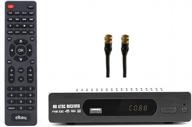
EXuby Digital Converter Box For TV With RF/Coaxial And RCA Cable For Recording And Viewing Full HD Digital Channels Free (Instant Or Scheduled Recording, 1080P HDTV, HDMI Output, 7 Day Program Guide)

12 Review
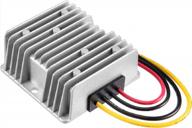
Kohree 36V To 12V DC/DC Converter Regulator - 10A 120W Golf Cart Voltage Reducer

17 Review
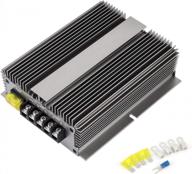
HOMELYLIFE 600W High Power Voltage Reducer DC 48V 60V 72V Step Down To DC 12V 50A Buck Converter Waterproof Module Car Truck Power Regulator Transformer

12 Review

TV Tuner LUMAX DV-2120HD

15 Review


